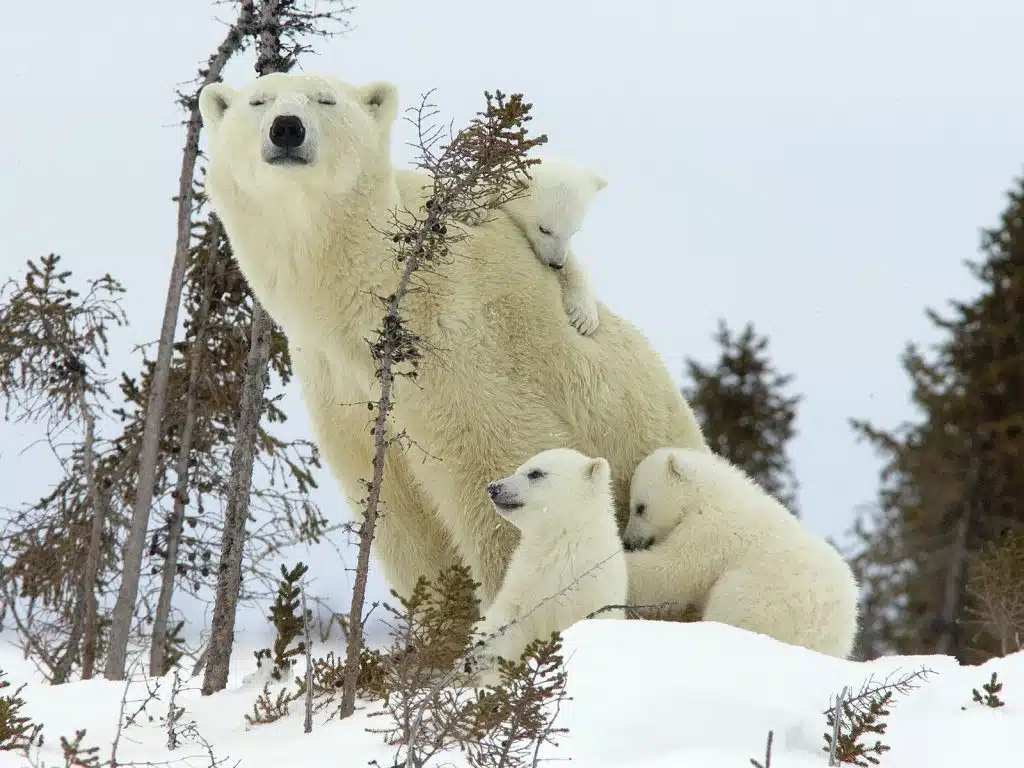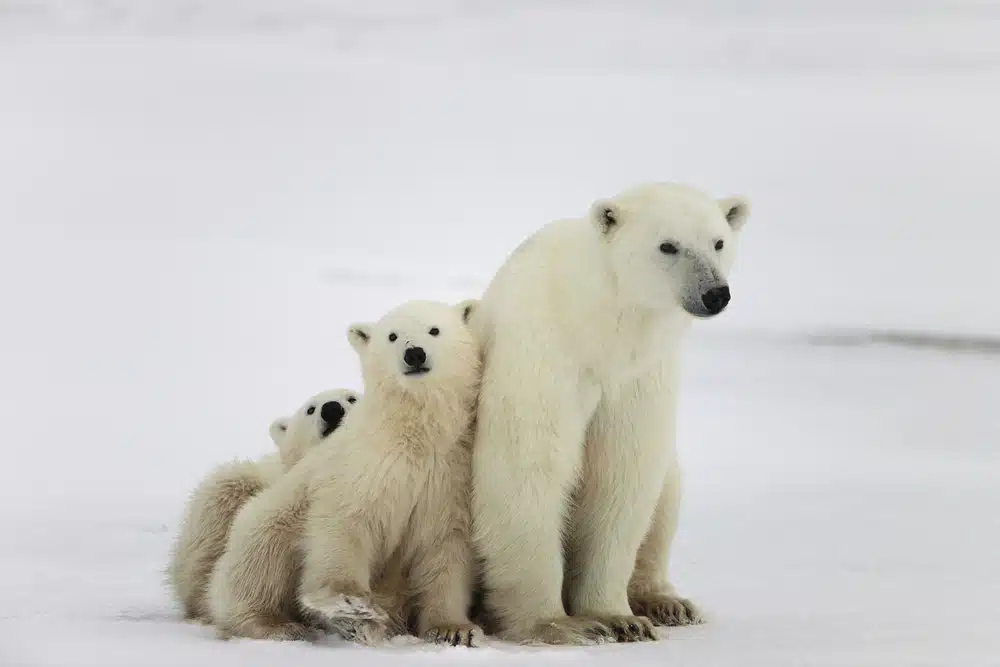
Mother’s Day is used to celebrate all that our moms do for us, from helping build our paper mache volcanoes and icing cupcakes to guiding us through the complexities of getting older.
While we say thank you to our own moms today, we also want to celebrate polar bear mothers for the incredible feats they go through for their cubs.
We’re breaking down four facts about polar bear maternity you need to know this Mother’s Day.
Polar bears have the longest fasting periods of any mammal
Female polar bears will feed throughout the winter and come ashore in the spring and summer months to mate and build or reuse an existing maternity den.
While inside their den throughout the colder months, mother bears are fasting and living off the body fat they gained over winter. It’s during this time they give birth to their cubs, nursing them until they leave the den together up to four months later.
These pregnant polar bears in the Hudson Bay region fast for up to eight months – twice as long as more northern bears!
They use the same den sites for a decade
Digging den sites in the banks and ridges of the vast peatlands within the Hudson Bay Lowlands requires an enormous amount of energy.
Pregnant polar bears conserve their energy by reusing existing earthen dens when possible.
These dens typically last for up to a decade, though some have been in use for up to 29 years.
Cubs nurse for two years
Cubs stay with their moms for just over two years, nursing for most of that time.
During these years, mother polar bears teach their young how to navigate sea ice and where to migrate, how to hunt, and how to mitigate dangerous situations.
Female polar bears have a new litter about every three years
Once their cubs are weaned and leave their mother’s side, female polar bears begin looking for a new mate and increasing their body fat again. Throughout her lifetime, a single polar bear can have as many as twelve cubs.
***
Protect mother polar bears and their cubs
The Hudson Bay Lowlands is home to polar bears and their cubs and stunning natural landscapes for us to experience – but only if climate change and potential mining don’t erode the region.
You can support the Indigenous nations working to establish protected areas by using our simple letter-writing tool.

